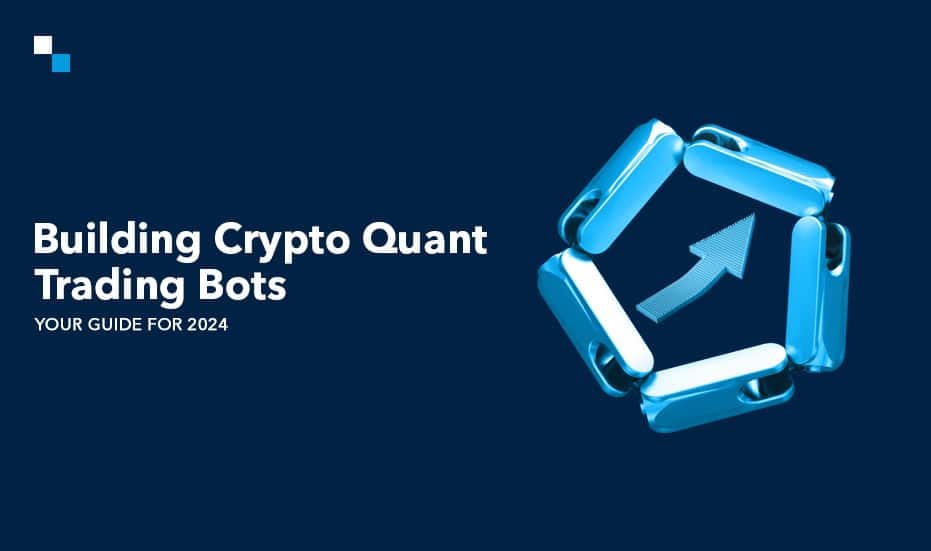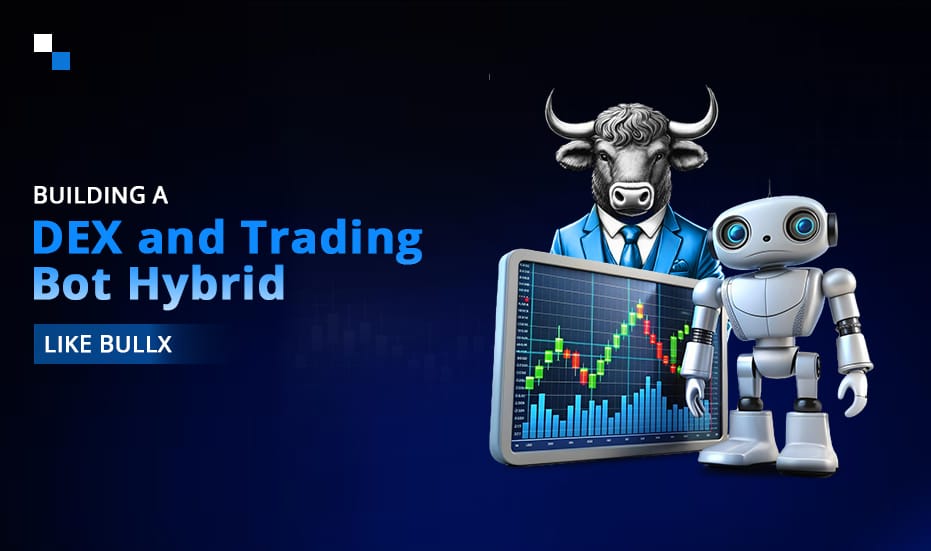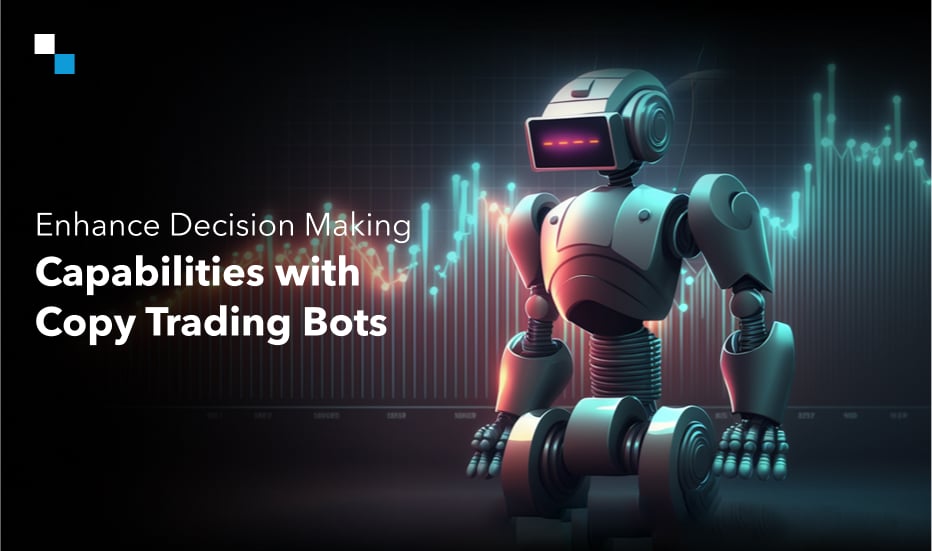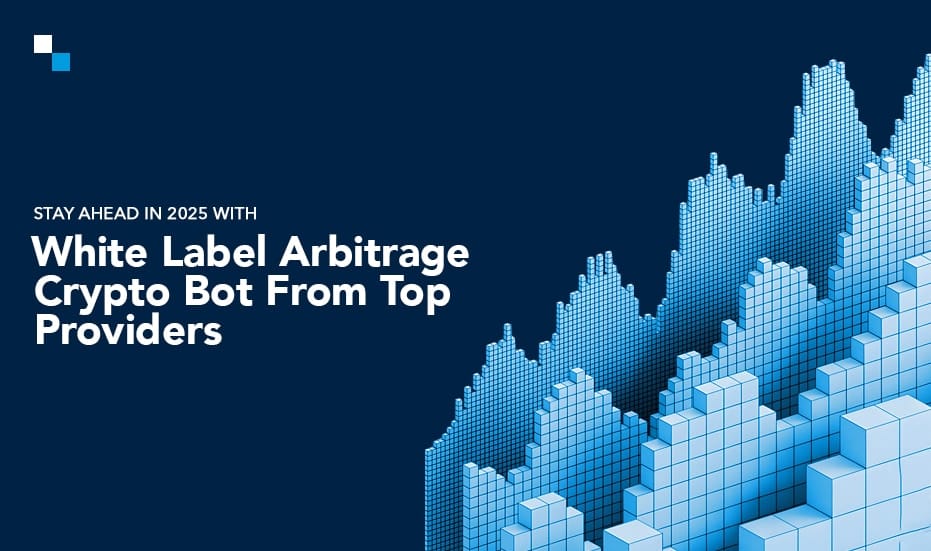
Generative AI in Financial Services: Real World Use Cases and Factors Fueling its Adoption
September 20, 2024
Launch Your Own Smart Contract Investment Platform Like Bank of Tron
September 23, 2024Quant trading in crypto is no longer cryptic or limited to a group of oddballs. Thanks to the best quant trading arbitrage bots and AI quantitative trading bots, the most complicated crypto trading strategies are now accessible to the common man. Since the regulatory landscape, sentimental shafts, technological innovations, and various other macroeconomic trends propel the volatile cryptocurrency market, quantitative analysis of high-quality data can empower traders to unleash staggering profits. The best quant trading arbitrage bots stand out due to their heavy reliance on quantitative analysis and vast data processing capabilities.
As these bots continue gaining significant prominence, they become a goldmine venture idea for entrepreneurs. In this blog, we’ll learn about:
- What is Quantitative Crypto Trading & How Do They Work?
- Key Components of AI Quantitative Trading Bot
- Essential Tools and Technologies For Building Quantitative Crypto AI Trading Bot
- Steps to Ace AI Quantitative Trading Bot Development
What is Quantitative Crypto Trading & How Do They Work?
Quantitative crypto trading, or quant trading, is a data-driven approach to trading digital assets. It leverages complex mathematical models and statistical techniques to contrive machine learning algorithms. By systematically processing vast amounts of data, AI quantitative trading bots identify exclusive profit-making opportunities that would otherwise be missed. These sophisticated trading algorithms efficiently anticipate crypto values and address risks.
The role of various mathematical and statistical models is pivotal in quantitative crypto trading:
- Moving Averages: Smoothens out price fluctuations to determine market trends
- Relative Strength Index (RSI): Measures the speed and change of price movements to identify overbought or oversold conditions.
- Fibonacci Retracement: Identifies potential support and resistance levels based on Fibonacci ratios
- Bollinger Bands: Measures volatility and identifies potential overbought or oversold conditions
While these complex computational techniques assess market volatility, identify opportunities, and forecast future movements, algorithmic trading brings consistency to the process. The intersection of algorithmic trading ensures that a predefined approach is used to automate the trades. The operation of the best quant trading arbitrage bots therefore involves a cycle of predefined actions ruled out by quantitative trading strategy, backtesting on historical data, and final trade execution.
Key Components of AI Quantitative Trading Bot
Crypto quantitative AI trading bots take into account historical, real-time, and blockchain activity data to scout for trading opportunities and make intelligent decisions without human emotional involvement. Unlike manual trading which considers intuition and technical chart patterns, this advanced strategy solely considers high-quality data-driven insights.
- Crypto Value Prediction:
The AI quantitative trading bots apply mathematical and statistical techniques to historical data, market trends, and other pivotal areas to foresee future prices.
- Sentiment Analysis:
Algorithms assess social media and news to analyze market sentiment which further impacts trading decisions.
- Risk Management:
By leveraging computational techniques to analyze historical data analysis and backtesting, the best quant trading arbitrage bots ace at identifying and managing risks. Various other risk assessment algorithms are put in place to prevent potential losses.
- Trading Algorithms:
The trade automation algorithms ensure that trades consistently follow a predetermined criteria. These alhgorithms ensure fearless, data-driven decisions, taken at speeds that humans can’t outpace.
- Data-Driven Refinement:
As mentioned above, the AI trading bots built to automate quant trading rely on historical, real-time, blockchain activity, market sentiment, and other data sets to define and refine their trading decisions.

Essential Tools and Technologies For Building Quantitative Crypto AI Trading Bot
To succeed in building a winning AI trading bot, you’ll need to find a leading AI trading bot development company specializing in the following tools and technologies:
- Programming languages: Python, R, or C++
- Data analysis tools: Pandas, NumPy, SciPy
- Machine learning libraries: TensorFlow, PyTorch
- Trading platforms: Binance, Coinbase Pro, BitMEX
- Backtesting software: QuantConnect, Backtrader

Steps to Ace AI Quantitative Trading Bot Development
- Define Your Trading Objectives and Strategy
Before engaging with a technology provider, you need a clear understanding of your trading goals and the strategies you want the AI quantitative trading bot to execute. Consider the following questions:
- What cryptocurrencies will the bot trade?
- What trading strategy will the bot use (e.g., pairs trading, market making, sentiment or predictive analysis, arbitrage)?
- What is your risk tolerance, and what risk management features will the bot require?
- Do you require an HFT arbitrage trading bot or one that operates on longer timeframes?
A well-defined strategy and a clear action plan will help your technology provider understand your specific needs and tailor the bot’s functionality accordingly.
- Choose the Right Technology Provider
Not all technology providers specialize in AI quantitative trading bot development, so it’s important to choose one with relevant experience. Look for a provider with:
- Industry Expertise: They should have a deep understanding of financial markets, trading algorithms, and AI technologies.
- Proven Track Record: Check their past projects and client testimonials to ensure they have successfully developed similar solutions.
- Customization: The AI trading bot provider should offer customizable solutions tailored to your unique trading strategy, rather than one-size-fits-all bots.
- Technical Support: Post-development support is crucial, especially when markets change, or you need to upgrade your bot.
Popular quantitative trading bot development companies include Antier, QuantConnect, Quantbot Technologies, etc.
- Collaborate on Technical Requirements
Once you’ve chosen a quantitative trading bot development company, work closely with them to outline the technical specifications of the trading bot. This includes:
- Programming Language: Depending on your needs, the bot can be built using languages such as Python, Java, or C++. Python is popular due to its extensive AI libraries (e.g., TensorFlow, scikit-learn).
- Data Sources: Identify where the best quant trading arbitrage bot will source its market data (exchange APIs, historical data providers, news feeds). The provider can integrate these data sources into the bot to ensure real-time analysis and decision-making.
- Trading Platform Integration: Through robust, flawless API integration, the bot provider must ensure that the bot seamlessly coordinates with your chosen trading platform.
- Leverage Machine Learning and AI Tools
Your AI quantitative trading bot development provider will help you incorporate machine learning models into the bot, which is the core of AI-driven trading. They will:
- Develop Predictive Models: Use historical market data to train the AI model to predict price movements, detect patterns, and make buy/sell decisions.
- Optimize Algorithms: Continuously refine and optimize the algorithms for better performance through backtesting and live simulations.
- Implement Machine Learning: Advanced AI trading bots can use reinforcement learning to adjust strategies based on live market conditions, improving over time.
- Backtesting and Simulation
Before deploying the bot in live markets, it’s essential to test it rigorously. The technology provider should set up a comprehensive backtesting environment that simulates real-world trading conditions using historical data. This step helps to:
- Identify Weaknesses: Analyze how the AI quantitative trading bot would have performed in different market conditions, such as bull or bear markets, and refine its decision-making.
- Optimize Performance: Adjust parameters like transaction frequency, risk thresholds, and stop-loss rules based on backtesting results.
- Stress Test the Bot: Simulate extreme market scenarios (e.g., flash crashes or high volatility) to see how the bot manages risks and liquidity challenges.
- Deploy the AI Trading Bot to Live Markets
Once the backtesting phase is complete and you’re confident in the bot’s performance, your technology provider will help you deploy it to live markets. This process includes:
- Exchange or Broker Integration: The bot must be connected to live trading accounts on exchanges or brokers through APIs.
- Real-time Monitoring: Set up monitoring tools to track the AI trading bot’s performance in real time. Many technology providers offer dashboards or analytical tools that allow traders to observe key metrics like profit and loss, transaction volume, and win rates.
- Error Handling: Ensure the bot has mechanisms to detect and respond to errors (e.g., API connection failures or slippage). Your provider should help implement automatic safeguards that temporarily halt trading in case of errors.
- Continuous Optimization and Upgrades
Building a successful AI quantitative trading bot is not a one-time project. Market conditions, regulations, and technologies change over time, requiring continuous updates to ensure optimal performance. Work with your provider to:
- Monitor Performance: Regularly review the bot’s trading performance and identify areas for improvement.
- Update Algorithms: As new market data becomes available, your AI models may need to be retrained to stay relevant. The arbitrage trading bot provider should offer periodic updates to ensure the bot adapts to evolving market trends.
- Scaling the Bot: As you are building the bot for your customers, you must ensure high scalability so that a large number of traders can frictionlessly and simultaneously execute quant trading. The technology provider should be able to scale the system to accommodate growth.

Final Word
AI quantitative crypto trading bots offer a more disciplined and data-driven approach to navigating the highly volatile crypto markets. In 2024, the rise of more sophisticated trading tools, entire crypto industry growth, advanced AI models, and greater market liquidity will drive the future of crypto quantitative trading.
If you are an entrepreneur planning to take advantage of the fantastic opportunities in the crypto quantitative trading bot market, Antier can help build the best quant trading arbitrage bot.
Mastering AI quantitative crypto trading bot development could be your ticket to consistent profitability in the world of crypto trading. So, what are you waiting for? Share your project requirements with us today!



